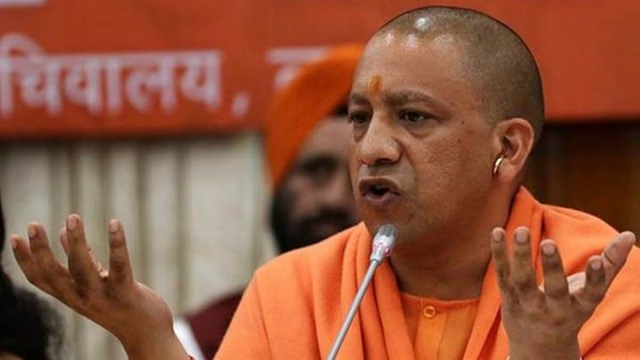Uttar Pradesh's Crackdown on Crime: Eight Years of Transformation Under Yogi Adityanath
- MGMMTeam

- Aug 2
- 4 min read
Over the past eight years, Uttar Pradesh has undergone a profound transformation in its law and order landscape under Chief Minister Yogi Adityanath’s administration. The state, once seen as a haven for organized crime, mafia syndicates, and sluggish justice systems, now presents itself as a case study in aggressive policing, structural reform, and political will. The Yogi government’s “zero-tolerance” approach towards crime and corruption has led to the dismantling of powerful criminal networks, the neutralization of terrorist sleeper cells, and the conviction of thousands through expedited trials.

Policing with Purpose: Encounters and Arrests
Since March 2017, Uttar Pradesh Police have actively pursued criminal elements through a series of operations that have resulted in nearly 15,000 police encounters. These operations led to the elimination of over 230 criminals and the injury of more than 9,000—many shot in the legs during gun battles to incapacitate them without fatalities. The government maintains that these actions were essential to restore peace and public safety, particularly in districts that were previously held hostage by gangsterism and mafia rule.
These actions were not confined to obscure corners of the state. Commissionerates like Lucknow, Gautam Buddha Nagar, and Ghaziabad, along with regions such as Meerut and Varanasi, witnessed concentrated operations targeting key crime hotspots. Yogi Adityanath’s administration reiterated that criminals would either have to abandon crime or leave the state altogether.
Operation Conviction: Accelerated Justice
One of the most noteworthy developments under Yogi’s leadership is the launch of “Operation Conviction” in July 2023. This initiative was designed to ensure that criminals were not only apprehended but also swiftly brought to justice. By June 2025, over 97,000 offenders had been convicted across nearly 70,000 resolved cases. Among these were death sentences, thousands of life imprisonments, and convictions in serious offenses such as rape, murder, and extortion.
On average, the state judiciary disposed of over 140 cases per day under this campaign. The conviction rate for murder stood above 82%, while convictions in cases related to theft and dacoity reached up to 98%. These figures underline the administrative commitment to not just arresting criminals but ensuring that they are prosecuted efficiently through the judicial system.
Legislative Muscle and Policing Reforms
The government’s crackdown was supported by legislative tools such as the Uttar Pradesh Control of Organised Crimes Act (UPCOCA), enacted in 2017. This law provided legal clarity and empowerment to act decisively against organized crime syndicates. At the same time, the state revamped police protocols to ensure transparency and accountability during encounters. These included mandatory videography of crime scenes, forensic investigations, and independent autopsies. Such measures were introduced in response to criticism from human rights groups concerned about potential misuse of force.
Fighting Terror and Illegal Conversions
The state’s security efforts extended beyond routine criminal offenses to combatting extremist elements and illegal religious conversions. Over the past eight years, multiple terrorist sleeper cells have been dismantled, and dozens of arrests were made in high-profile operations. The government also took a firm stand against unlawful religious conversions through the enactment of the Uttar Pradesh Prohibition of Unlawful Conversion of Religion Act, 2021. This legislation targeted organized conversion rackets, with notable arrests such as that of Jalaluddin alias Changur, who was allegedly running a conversion network.
Ensuring Women’s Safety and Legal Redress
A standout achievement of the Yogi government lies in its handling of crimes against women. Uttar Pradesh recorded the highest disposal rate of sexual harassment cases in the country—an astounding 98.6% between 2018 and 2025. The pendency rate stood at just 0.2%, placing UP at the forefront of women’s safety enforcement in India. In rape cases under POCSO (Protection of Children from Sexual Offences) laws, charge sheets were filed within 60 days in over 80% of cases, securing Uttar Pradesh the third-highest position among large states.
Recognizing disparities in district-level performance, Chief Minister Yogi Adityanath personally intervened, directing districts with poor resolution rates to show immediate improvement or face administrative consequences. The message from the top was clear: crimes against women would not be treated lightly, and institutional lethargy would not be tolerated.
Crime Data, Perception, and Media Narratives
Contrary to narratives in some sections of the media that label Uttar Pradesh as the most crime-ridden state in India, data tells a different story. According to 2022 statistics, UP had a crime rate of 322 per 100,000 people—well below the national average of 422. Many claims that portray Uttar Pradesh as topping crime charts are based on raw numbers rather than normalized data and often lack statistical context. Independent fact-checking organizations like OpIndia and reports in The Federal have debunked such misrepresentations, emphasizing that increased police reporting and transparency are being wrongly interpreted as indicators of higher crime.
Conclusion: A Model for Tough but Accountable Governance
In eight years, Uttar Pradesh has transitioned from a state grappling with lawlessness to one that projects control, order, and swift justice. Through a combination of proactive policing, legislative clarity, structural judicial reform, and political commitment, the Yogi Adityanath government has set an unprecedented benchmark. While criticisms regarding excessive force and judicial oversight remain, the scale and outcome of law enforcement initiatives cannot be ignored.
The success of “Operation Conviction,” record-setting crime resolution rates, crackdown on organized conversions, and focused attention on women’s safety reflect a governance model built on discipline, speed, and deterrence. As Uttar Pradesh moves forward, the challenge lies in sustaining this momentum while ensuring that constitutional safeguards and civil liberties remain intact. If balanced well, the Yogi model could become a blueprint for other Indian states seeking to restore public faith in the criminal justice system.
(Sources: Times of India, Indian Express, OpIndia)




Comments